This guide applies to the switch-type actuators of the DCL explosion-proof series, standard series, and quick-open series. The models are as follows:
Weather-proof Actuator: DCL-05, DCL-10, DCL-20, DCL-40, DCL-60, DCL-100, DCL-160, DCL-250
Explosion-Proof Actuator: DCL-Ex05, DCL-Ex10, DCL-Ex20, DCL-Ex40, DCL-Ex60
Quick-Turn Actuator: DCL-K05, DCL-K10, DCL-K20, DCL-K40, DCL-K100
Common Faults and Troubleshooting Methods
| Fault | Possible Causes | Troubleshooting Methods |
|---|---|---|
| Actuator does not open or close at startup | 1. Incorrect wiring. 2. Incorrect power supply. 3. Faulty control switch or relay. 4. Control system mismatch. 5. Multiple actuators or actuator in parallel with other devices. | 1. Check the wiring against the actuator’s wiring diagram to ensure it is correct. 2. Verify power supply output voltage is ±10% of rated voltage, and the current is at least three times the actuator’s rated current. 3. Use a multimeter to measure input voltage at the actuator’s control terminal and confirm it matches expected values. 4. Use a mechanical switch to test actuator operation. If it works, verify the control system output logic. 5. Switch-type actuators should not be connected in parallel with other devices; use a single control circuit. |
| Actuator only opens or closes, not both | 1. Incorrect wiring. 2. Incorrect full open/full close cam settings. | 1. Use a mechanical switch to test actuator functionality. If it works, verify the control system output logic. 2. Check actuator’s wiring against the wiring diagram. 3. Adjust the cam settings according to the “How to Set Switch-type Electric Valves” manual. |
| Actuator stops in the middle of its stroke | 1. Valve is stuck. 2. Solid particles in the fluid medium causing valve blockage. 3. Incorrect full open/full close block settings. | 1. Check if the valve is stuck. Remove obstructions and retry after the actuator cools down from overload protection. 2. Inspect the fluid medium for solid particles. Remove any blockage and retry after cooling. 3. Adjust block settings according to the “How to Set Switch-type Electric Valves” manual. |
| Cannot turn the actuator with the handwheel | 1. Solid particles in the fluid medium causing valve blockage. 2. Valve is stuck. 3. Actuator’s reduction mechanism is damaged. | 1. Check fluid medium for particles causing blockage. Remove obstructions and retry after cooling. 2. Inspect valve for any stuck parts. Remove blockage and retry. 3. If actuator cannot be turned by hand, remove it from the valve. If it still doesn’t turn, replace with a new actuator. |
| No output from position feedback signal | 1. Incorrect switch wiring. 2. Incorrect full open/full close cam settings. 3. Overcurrent causing damage to the position feedback signal switch. | 1. Check wiring of the switch against the actuator’s wiring diagram to ensure it is correct. 2. Verify full open/full close cam is properly compressing the position feedback switch. 3. Measure the position feedback circuit to check if the switch is intact and properly connected. |
Please check if the operating conditions meet the parameter requirements.
Electric actuators may fail due to improper use or operating in incorrect conditions. To ensure long-term, trouble-free operation, the actuator must be used within the operating conditions specified in the product datasheet.
Power Supply Voltage: The supply voltage must be within the actuator’s rated operating voltage range. Overvoltage or undervoltage may reduce the actuator’s lifespan.
Power Supply Current: Since the motor’s starting current is significantly higher than the rated current, please ensure that the power supply can provide a current capacity at least 3 times the actuator’s rated current to ensure reliable operation.
Temperatur: Ensure that the actuator operates within the rated temperature range. Operating the actuator outside the specified temperature range may cause malfunction, reduced lifespan, or eventual failure.
Miljø: The DCL switch-type actuators are rated at IP67 for wind and rain protection. They are generally suitable for both indoor and outdoor use, providing protection against rain, splashes, and UV exposure (sunlight), which typically extends the product’s lifespan. Extremely corrosive environments may cause premature failure of electronic components. Do not use non-explosion-proof actuators in explosive atmospheres.
Duty Cycle: The duty cycle of the DCL switch-type actuator is 70% (42 seconds of operation per minute, with a required 18 seconds off). Exceeding a 70% duty cycle will trigger thermal protection for the motor.
Check if the wiring of the actuator is correct.
Ensure that all electrical connections are properly made according to the wiring diagram provided in the product manual. Incorrect wiring can lead to malfunction or damage to the actuator. Verify the following:
The power supply connections are properly secured and there are no loose wires.
The control signal wiring is correctly connected, ensuring polarity and signal type are properly matched.
The ground connection (if applicable) is properly established to avoid electrical hazards.
Double-check the connection of any external components, such as limit switches or feedback devices, to ensure they are wired correctly.
PÅ - AV
A - Med 2 aktive signalutganger for sluttposisjon
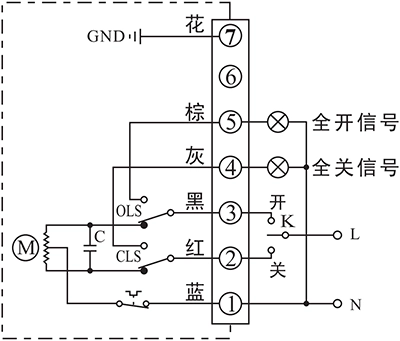
- Styr aktuatoren for å åpne eller lukke med K
- Utgangsterminalen for endeposisjon OPEN/CLOSE vil sende ut hendelsen som et 220VAC aktivt signal når endeposisjonen ble nådd.
Tilkoblingsdetaljer:
- Koble AC85-220V strømforsyningsnøytral til P1.
- Slå AC85-220V-ledningen til CLOSE (P2) for å stenge ventilen
- Sett AC85-220V-ledningen til OPEN (P3) for å åpne ventilen.
- P5 er sluttposisjon ÅPEN terminal som vil sende ut en AC220V kilde som kan brukes til å drive en indikasjonslampe når aktuatoren har nådd sluttposisjon åpen.
- P6 er sluttposisjon ÅPEN terminal som vil sende ut en AC220V kilde som kan brukes til å drive en indikasjonslampe når aktuatoren har nådd sluttposisjon for lukking.
- Koble jord til P7.
B - Med 2 passive endeposisjonsbrytere
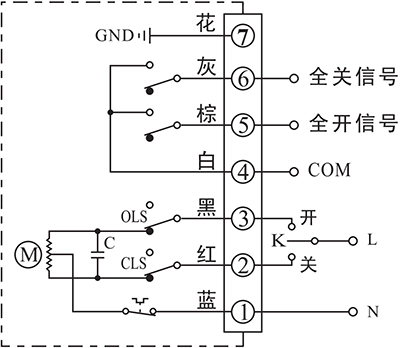
- Styr aktuatoren for å åpne eller lukke med K
- Utgangsterminalen for endeposisjon OPEN/CLOSE sender ut hendelsen som et passivt signal når endeposisjonen er nådd.
Tilkoblingsdetaljer:
- Koble AC85-220V strømforsyningsnøytral til P1.
- Slå AC85-220V-ledningen til CLOSE (P2) for å stenge ventilen
- Sett AC85-220V-ledningen til OPEN (P3) for å åpne ventilen.
- P4 er COM for passivt kontaktsignal for endeposisjon OPEN/CLOSE, som normalt er koblet til signal GND.
- P5 er sluttposisjon ÅPEN terminal som kobles til COM når aktuatoren har nådd sluttposisjon åpen.
- P6 er sluttposisjon CLOSE-terminal som kobles til COM når aktuatoren har nådd sluttposisjon for lukking.
- Koble jord til P7.
G - Likestrømsmotor med 2 endeposisjonsbrytere
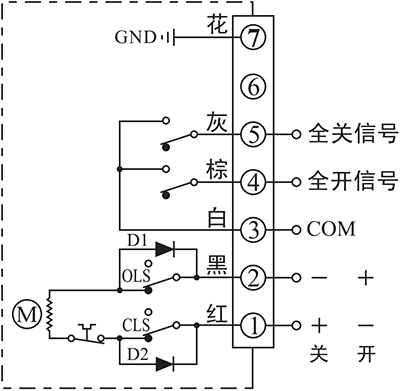
- Styr aktuatoren for å åpne eller lukke ved hjelp av strømforsyningsretningen mellom terminal 1 og 2
- Utgangsterminalen for endeposisjon OPEN/CLOSE sender ut hendelsen som et passivt signal når endeposisjonen er nådd.
Tilkoblingsdetaljer:
- Koble DC24V+ til P1 og DC24V- til P2 for å stenge ventilen.
- Koble DC24V+ til P2 og DC24V- til P1 for å stenge ventilen.
- P3 er COM for passivt kontaktsignal for endeposisjon OPEN/CLOSE, som normalt er koblet til signal GND.
- P4 er sluttposisjon ÅPEN terminal som kobles til COM når aktuatoren har nådd sluttposisjon åpen.
- P5 er sluttposisjon CLOSE-terminal som kobles til COM når aktuatoren har nådd sluttposisjon for lukking.
- Koble jord til P7.
H - 3-faset 380VAC-motor med 2 endeposisjonsbrytere

- Styr aktuatoren for å åpne eller lukke ved hjelp av en ekstern omformer for å endre fasen på strømforsyningen.
- Utgangsterminalen for endeposisjon OPEN/CLOSE sender ut hendelsen som et passivt signal når endeposisjonen er nådd.
Tilkoblingsdetaljer:
- Ved å koble en 3-faset AC380V inverterutgang til P1, P2 og P3, kan aktuatoren styres til å åpne eller lukke ventilen ved å endre 3-faserekkefølgen.
- Koble AC380V nøytral til N(P4).
- P5 brukes til å samarbeide med en ekstern bryter for å styre omformerens 3-fase rekkefølge. Denne terminalen kobles til N(P4) når aktuatoren ikke er i sluttposisjon for CLOSE, og kobles fra N(P4) etter at aktuatoren har nådd sluttposisjon for CLOSE.
- P6 brukes til å samarbeide med en ekstern bryter for å styre omformerens 3-fase rekkefølge. Denne terminalen kobles til N(P4) når aktuatoren ikke er i endeposisjon OPEN, og kobles fra N(P4) etter at aktuatoren har nådd endeposisjon OPEN.
- P7 er COM for passivt kontaktsignal for endeposisjon OPEN/CLOSE, som normalt er koblet til signal GND.
- P8 er sluttposisjon ÅPEN terminal som kobles til COM når aktuatoren har nådd sluttposisjon åpen.
- P9 er sluttposisjon CLOSE-terminal som kobles til COM når aktuatoren har nådd sluttposisjon for lukking.
- Koble jord til P12.
Innkjøring og posisjonering
F - Med en posisjoneringsenhet
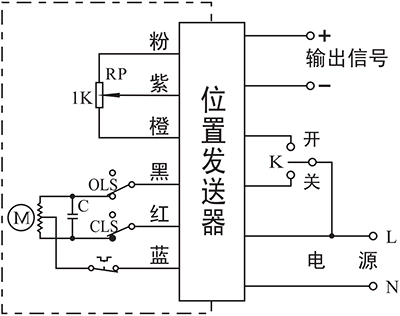
- Styr aktuatoren for å åpne eller lukke med K
- Ventilposisjonen i sanntid sendes ut som et 4-20 mA-signal.
Tilkoblingsdetaljer:
- Koble AC85-220V-strømforsyningsledningen til L og nøytral til N.
- Slå AC85-220V-ledningen til CLOSE (P2) for å stenge ventilen.
- Sett AC85-220V-ledningen til OPEN (P3) for å åpne ventilen.
- Koble utgang -/+ til systemet for å sende ut ventilposisjonen i sanntid.
C - Med et 1KΩ/500Ω potensiometer

- Styr aktuatoren for å åpne eller lukke med K
- Ventilens sanntidsposisjon sendes ut som en potensiometermotstandsverdi
Tilkoblingsdetaljer:
- Koble AC85-220V strømforsyningsnøytral til P1.
- Slå AC85-220V-ledningen til CLOSE (P2) for å stenge ventilen
- Sett AC85-220V-ledningen til OPEN (P3) for å åpne ventilen.
- P4 er den lave siden av potensiometeret som normalt er koblet til signal GND.
- Koble signalinngangen til kontrollsystemet til P5. Motstandsverdien mellom P4 og P5 blir høyere når aktuatoren åpner ventilen, mens verdien mellom P5 og P6 blir lavere.
- P6 er den høye siden av potensiometeret som normalt er koblet til signalstrøm.
- Koble jord til P7.
D - Med potensiometer og endeposisjonstilbakemelding
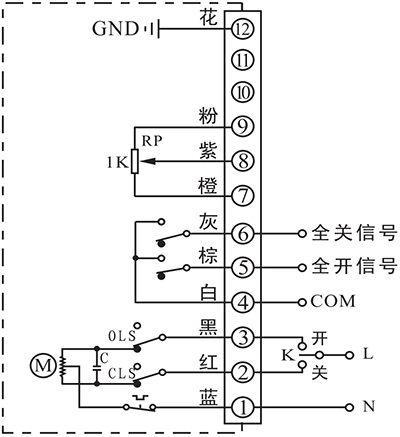
- Styr aktuatoren for å åpne eller lukke med K
- Ventilens sanntidsposisjon sendes ut som en potensiometermotstandsverdi
- Utgangsterminalen for endeposisjon OPEN/CLOSE sender ut hendelsen som et passivt signal når endeposisjonen er nådd.
Tilkoblingsdetaljer:
- Koble AC85-220V strømforsyningsnøytral til P1.
- Slå AC85-220V-ledningen til CLOSE (P2) for å stenge ventilen
- Sett AC85-220V-ledningen til OPEN (P3) for å åpne ventilen.
- P4 er COM for passivt kontaktsignal for endeposisjon OPEN/CLOSE, som normalt er koblet til signal GND.
- P5 er sluttposisjon ÅPEN terminal som kobles til COM når aktuatoren har nådd sluttposisjon åpen.
- P6 er sluttposisjon CLOSE-terminal som kobles til COM når aktuatoren har nådd sluttposisjon for lukking.
- P7 er den lave siden av potensiometeret som normalt er koblet til signal GND.
- Koble signalinngangen til kontrollsystemet til P8. Motstandsverdien mellom P7 og P8 vil bli høyere når aktuatoren åpner ventilen, mens verdien mellom P8 og P9 vil bli lavere.
- P9 er den høye siden av potensiometeret som normalt er koblet til signalstrøm.
- Koble jord til P12.
Merknad:
- Kretsen innenfor den stiplede boksen er den interne kretsen til aktuatoren. Kretsen utenfor er en demonstrasjon av elektrisk tilkobling for bruk av aktuatoren.
- Hvis du har andre spesifikke krav til tilkoblingskretsen, er du velkommen til å kontakte vår tekniske support.

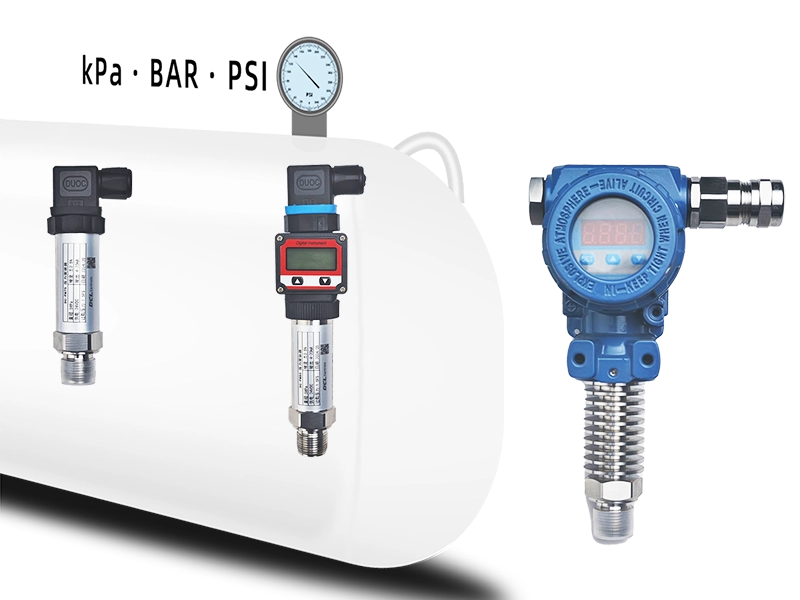
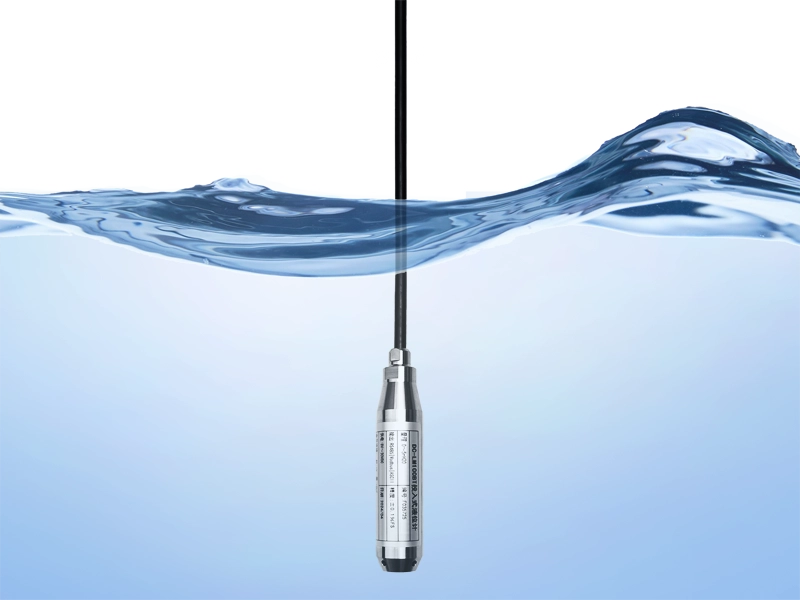





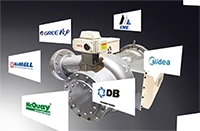


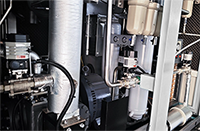



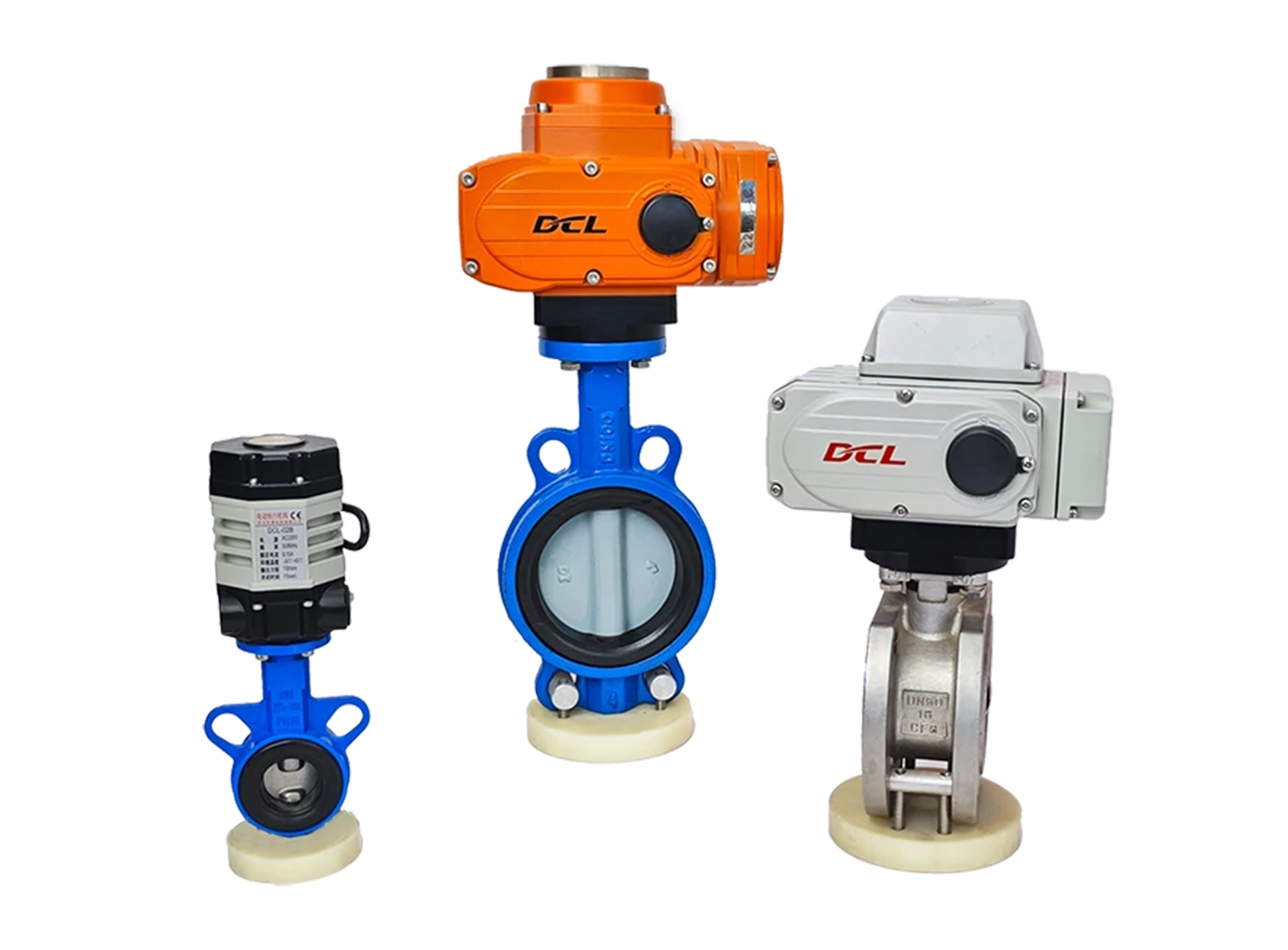












 鄂公网安备 42018502006527号
鄂公网安备 42018502006527号